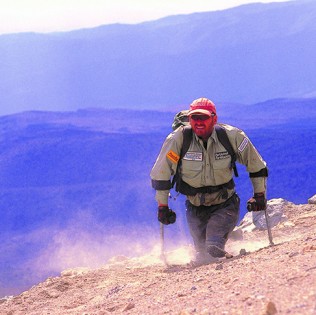by Steve Everley
Published on October 15th, 2014
Why the Oil and Gas Industry Can’t Ignore Social Media
Ask the average person on the street about social media, and he or she likely will admit to using it on occasion. Ask how that person uses it, and he or she will probably talk about keeping in touch with friends and relatives.
How many use it for work? Not many.
For most people, Twitter is a live stream of jokes and sports statistics, while their Facebook feeds are full of photos from the latest family vacation, with sarcastic posts about restaurant service. With that kind of reputation, it’s easy to see why multi-billion-dollar industries like oil and natural gas have largely ignored social media.
And what about the companies that do invest in social media? They often use a standard corporate approach, which usually means posting press releases and details from earnings calls.
But amidst all the nonsense, clutter, and tedium, direct and meaningful engagement on social media can actually enhance a company’s reputation. Social media can help oil and natural gas companies in particular preserve their license to operate in certain communities by staving off and correcting misinformation about their operations.
There are endless data points and research papers examining who is using social media and for what purpose. And as the oil and natural gas industry inarguably needs to improve its image with particular segments of the population (i.e. young voters, women, etc.), this can prove useful: Facebook, for instance, allows companies to track the demographics of the people they engage, and a variety of social media platforms use geo-targeting that enables organizations to focus their messaging on specific regions, states, and even individual cities and towns.
But, ironically, one of the most important components of social media has to do with something it has begun to replace: traditional media.
A recent survey from Indiana University found that one-third of American journalists use social media for at least 30 minutes every day. Half of them use microblogs like Twitter to gather information and report their stories. More than half (55%) use social media to find tips and other sources for the stories they’ll ultimately write.
Social media ranks very high on journalists’ priorities. The IU study found that social media training ranked as their second highest priority, behind video editing – which itself is considered a form of social media (think YouTube).
What does this mean? Social media is not just where news can be found; it’s where news is created. And that means the conventional method of communicating a company announcement – sending a media release out to news wires – is being replaced by social media.
Think about how some of the biggest news and financial stories in recent years have been broken. Osama’s bin Laden’s death and Carl Icahn’s announcement of his position in Apple both surfaced first on Twitter. A Facebook page broke the news of the beginning of the 2010 uprising and revolution in Egypt.
This is a significant shift in the way communications happen, and companies must take note.
Mining the Channel
So how can oil and gas companies best leverage social media? The key is robust interaction, which means not just responding to questions (and, sometimes, criticism), but proactively engaging communities with positive messages.
After several towns in Colorado voted to ban or restrict hydraulic fracturing last year, a report in Forbes identified social media as a key reason. The author reviewed social media’s role in the ban and described it as “another one-way street dominated by the anti-fracking community,” with virtually “no engagement by industry.” Considering how inexpensive it is to send a single tweet or publish a Facebook post, social media allows activist groups with small budgets (and sometimes comparatively small followings) to have a major impact.
Indeed, a quick search on Twitter of the top hits using the hash tag #fracking will generate some decidedly negative messages. Environmental groups that want to restrict or even ban oil and gas development are active on social media, engaging not only other activists, but also looping in elected officials and journalists. In fact, in Denton, Tex. – where voters will consider a ballot measure to ban drilling in the city in November 2014 – a local reporter who covers the gas industry has actually been coordinating with anti-fracking activists on one of their Facebook pages.
The challenge, however, is for the oil and gas industry to see social media as an opportunity, rather than simply another area in which it is obliged to participate.
Given the current nature of the debate over oil and gas – particularly the “local impacts” of hydraulic fracturing – the most effective approach is to focus on regional assets and address specific local concerns. Air emissions, health, earthquakes, water use, and many other topics are common nationwide, but individual regions rarely regard all of these matters as equally important. Any given community is likely concerned primarily with just one or two of these issues. Social media, through its ability to geo-target and identify local advocates, can provide not only a glimpse into each community’s key concerns, but also a platform for addressing them directly, clearly and effectively.
On a similar note, reporters looking for their next story are actively scanning social media pages of local groups and companies. If a company has a positive message to share, engaging a particular community on Twitter or Facebook can show the media that there’s more to the company’s local commitment than canned statements in press releases.
In the end, nothing will ever replace the value of direct, person-to-person contact. The sincerity of a handshake, and taking the time to hear out a local resident’s concerns in person, cannot be rivaled by even the most strategic tweet. But that truth no longer can be used as a justification for ignoring social media.
The old adage in the business world is to go fishing where the fish are. When it comes to social media, companies that aren’t actively and intelligently engaging increasingly look as if they’re casting their lines onto the dry dock. They shouldn’t be surprised when they don’t get any bites.
Did you enjoy this article?


 Paul J. Johnson – A Tribute to a Passionate Community Leader
Paul J. Johnson – A Tribute to a Passionate Community Leader Canadian LNG on Ice? Where Will the Puck Stop?
Canadian LNG on Ice? Where Will the Puck Stop? Warren Macdonald Lost his Legs but he Climbed Mt. Kilimanjaro Anyway!
Warren Macdonald Lost his Legs but he Climbed Mt. Kilimanjaro Anyway!
